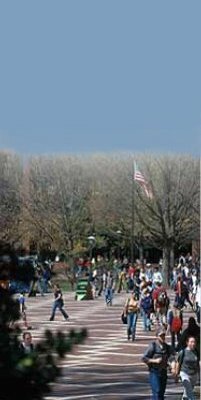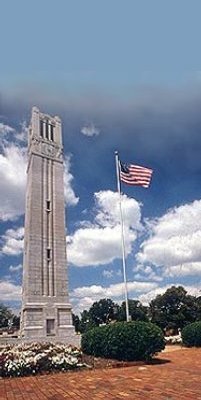
|
The Center for the Biology of Nematode Parasitism exploits opportunities in post-genomic biology.
This Center integrates knowledge and research of free-living and parasitic nematodes and exploits model systems to make strides in understanding the basic mechanism of parasitism.
|


| Error: It's not possible to reach RSS file... |
|
 |
|
The Center's News Aggregator
The most recent citations from the PubMed database for the search term "Nematode." Those entries are followed by the results for the search terms "Nematode NCSU." The PubMed news feed is updated as changes are made to their database. Check back often.
|
|
|

pubmed: nematode
NCBI: db=pubmed; Term=nematode
- nematode; +27 new citations
27 new pubmed citations were retrieved for your search. Click on the search hyperlink below to display the complete search results: nematode These pubmed results were generated on 2013/12/07PubMed, a service of the National Library of Medicine, includes over 15 million citations for biomedical articles back to the 1950's. These citations are from MEDLINE and additional life science journals. PubMed includes links to many sites providing full text articles and other related resources.

pubmed: nematode ncsu
NCBI: db=pubmed; Term=nematode ncsu
- Renal effects of Dirofilaria immitis in experimentally and naturally infected cats.
Related Articles Renal effects of Dirofilaria immitis in experimentally and naturally infected cats. Vet Parasitol. 2011 Mar 22;176(4):317-23 Authors: Atkins CE, Vaden SL, Arther RG, Ciszewski DK, Davis WL, Ensley SM, Chopade NH Abstract Canine heartworm infection has been associated with glomerular disease and proteinuria. We hypothesized that proteinuria, likely due to glomerular damage, would also be found in cats experimentally and naturally infected with Dirofilaria immitis. Two populations of cats were evaluated, including 80 that were each experimentally infected with 60 infective heartworm larvae as part of a drug safety study, and 31 that were naturally infected with D. immitis. Each had a control population with which to be compared. In the experimentally infected group, we evaluated urine from 64 cats. Ten of these cats were shown to have microalbuminuria 8 months post infection. No cat refractory to infection with larvae and no cats from the control group demonstrated microalbuminuria. All 10 microalbuminuric cats were shown to have significant proteinuria, as measured by the urine protein:creatinine ratio. There was a subtle, but significant, association between worm burden and proteinuria, and although the presence of adult heartworms was required for the development of proteinuria, both microfilaremic and amicrofilaremic cats were affected. Neither the presence of circulating heartworm antibodies and antigen nor the presence of antigenuria predicted the development of proteinuria. Both heavily infected cats (5-25 adult heartworms) and cats with worm burdens compatible with natural infections (1-4 adult heartworms) developed proteinuria, and the relative numbers of cats so affected were similar between heavily and more lightly infected cats. Naturally infected cats, for which only dipstick protein determinations were available, were shown to have a significantly greater incidence of proteinuria (90% vs 35%) than did those in an age- and gender-matched control population. Additionally, the proteinuria in heartworm-infected cats was 3- to 5-fold greater in severity. We conclude that cats infected with mature adult heartworms are at risk for developing proteinuria and that this is recognized relatively soon after infection. While heavier infections may predispose cats to developing proteinuria, this complication is seen in naturally infected cats and experimental cats with worm burdens similar to those seen in natural infections (i.e., "clinically appropriate" worm burdens). The clinical relevance of heartworm-associated proteinuria is yet to be determined. PMID: 21324603 [PubMed - indexed for MEDLINE]
|
|
|
|
|
|
|
|
|
|
|
|
|
|
|
|
|
 |



Comprehensive Transcriptome Profiling in Tomato Reveals a Role for Glycosyltransferase in Mi-Mediated Nematode Resistance Plant Physiology 144:1079-1092 (2007)
Jennifer E. Schaff, Dahlia M. Nielsen, Chris P. Smith, Elizabeth H. Scholl and David McK. Bird
Phylogenetic Analysis of Pasteuria penetrans by Use of Multiple Genetic Loci Journal of Bacteriology, August 2005, p. 5700-5708, Vol. 187, No. 16
Lauren Charles, Ignazio Carbone, Keith G. Davies, David Bird, Mark Burke, Brian R. Kerry, and Charles H. Opperman
Root-knot nematodes and bacterial Nod factors elicit common signal transduction events in Lotus japonicus PNAS | February 22, 2005 | vol. 102 | no. 8 | 3147-3152
Ravisha R. Weerasinghe, David McK. Bird and Nina S. Allen
Virulence Genes in Heterodera glycines: Allele Frequencies and Ror Gene Groups Among Field Isolates and Inbred Lines (pdf file)
Phytopathology | February 2005 | Volume 95, Number 2
K. Dong, K. R. Barker, and C. H. Opperman. Pages 186-191.
Lotus japonicus: A New Model to Study Root-Parasitic Nematodes
Dasharath Prasad Lohar and David McK. Bird
Plant and Cell Physiology, 2003, Vol. 44, No. 11 1176-1184
Horizontally transferred genes in plant-parasitic nematodes: a high-throughput genomic approach
Elizabeth H Scholl, Jeffrey L Thorne, James P McCarter, and David Mck Bird
Genome Biology 2003, Vol. 4, Issue 6
Cytokinins play opposite roles in lateral root formation, and nematode and Rhizobial symbioses
Lohar, Dasharath Prasad, Schaff, Jennifer E., Laskey, James G., Kieber, Joseph J., Bilyeu, Kristin D., Bird, David McK.
The Plant Journal 38 (2), 203-214. (2004)
Model systems in agriculture: Lessons from worms.
Bird, David McK.
Annals of Applied Biology 146 (2), 147-154. (2005)
Resolving tylenchid evolutionary relationships through multiple gene analysis derived from EST data
Elizabeth H. Scholl and David McK. Bird
In Press, Corrected Proof, Available online 3 May 2005
Plant Parasitic Nematodes: Habitats, Hormones, and Horizontally-Acquired Genes
David McKenzie Bird, Hinanit Koltai
Journal of Plant Growth Regulation, Volume 19, Issue 2, Jun 2000, Pages 183 - 194
Alkahest NuclearBLAST : a user-friendly BLAST management and analysis system
Diener SE, Houfek TD, Kalat SE, Windham DE, Burke M, Opperman C, Dean RA
BMC Bioinformatics 2005, 6:147 (15 June 2005)

Wormbase
Nematode.Net
DNA Analysis
Entrez
Blaxter Lab
C. Elegans WWW server
Agriculture Network Information Center
Genome Research Laboratory
|

|



